Staying warm in Japan in winter can be a challenge. The country’s chilly winters often take people by surprise and subsequently leave them unprepared.
Temperatures generally range from single digits to low teens, although this varies greatly from south to north. You can expect milder temperatures in tropical Okinawa to the south and frigid sub-zero ones on the northern island of Hokkaido.
I know some people might find defining certain areas of Japan cold as laughable. Just how cold you find it depends on what kind of climate you are used to and where you decide to travel in Japan. I have some Scandinavian friends who think Tokyo is positively pleasant during even the coldest, snowy snaps.
But one thing that I think we can all agree on is that Japan’s buildings and apartment blocks somehow find themselves to be only marginally warmer than the outside. I saw someone write on social media recently: “The difference between my home country and Japan in the winter is that, when you go inside, it’s actually warm!”
I think that gets to the heart of people’s complaints about Japanese winters right there. With winter for many comes seemingly endless nights of dressing like you’re in Siberia and shivering the night away.
The main reason is that Japan’s structures are designed to be “disposable,” in that they are built to last a short time, around 30 years is the most often quoted figure, after which point the building is destroyed and rebuilt from the ground up.
Walls are generally paper thin and insulation often non-existent. Frigid air seems to permeate rooms from every direction – the floors, the walls, and especially the windows, which tend not to be very well sealed.
And if you’ve ever had the experience of frequenting a Japanese school, congratulations you’ve experienced another level of cold. There should probably be a term for the draftiness of a Japanese school hall or when they take classes with all the windows open because we need “new air”.
So what are you to do if you find yourself in Japan during the winter season? Turning on the heater aside, here are 11 ways to beat the cold, that you can do even as a temporary visitor to Japan.
Table of Contents
1. Pick up some kairo
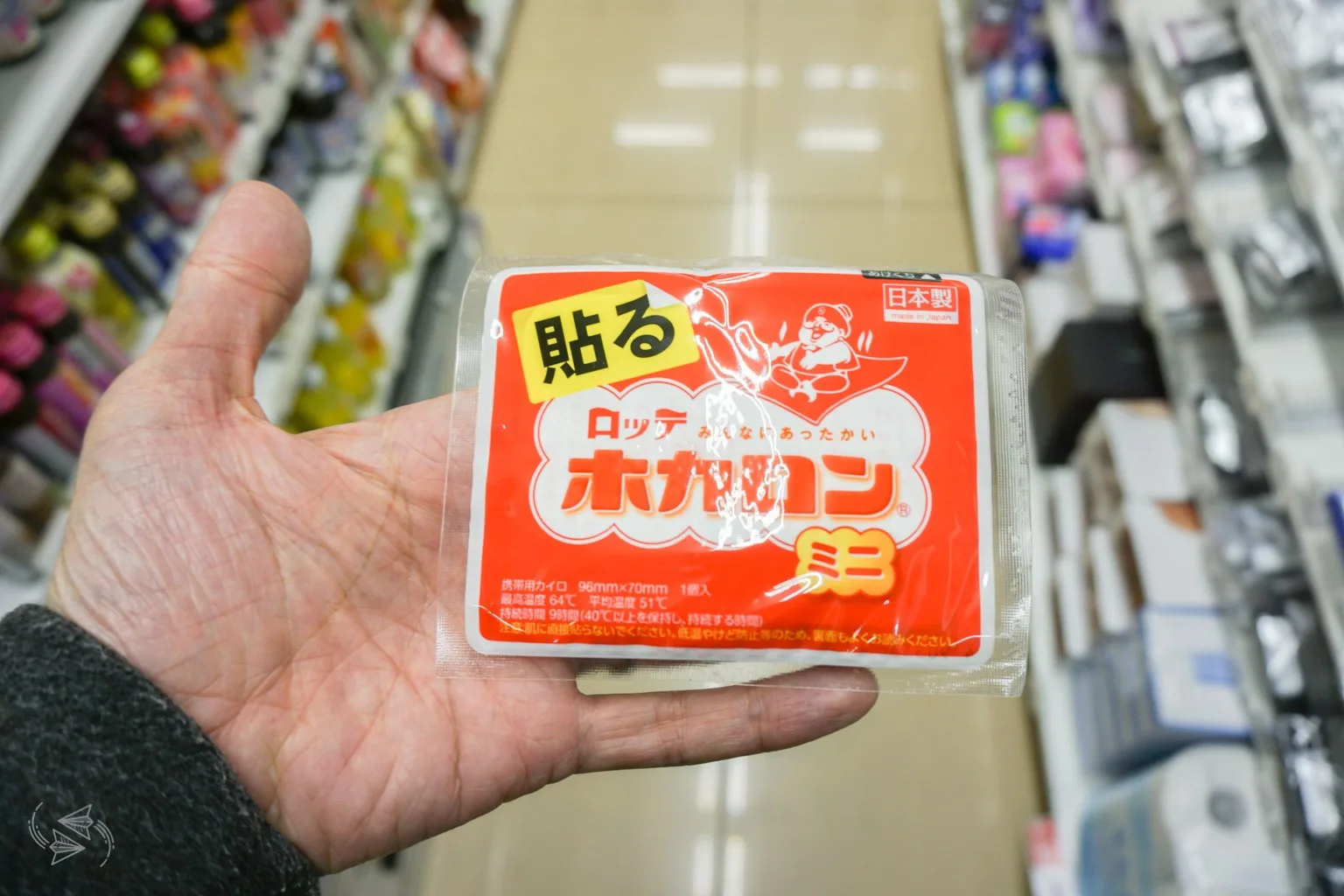
Kairo are pocket warmers filled with a mysterious gel that can be activated anywhere upon snapping them or moving the gel around with your hands.
They are extremely popular and can be found at any pharmacy (convenience stores and 100 yen stores often stock them too).
Some will last for a short time, while others can last hours and hours. You can put them in your pockets, inside your shoes and there are even ones with a sticky back so you can strategically place them on the inside of your clothes or between layers for added warmth.
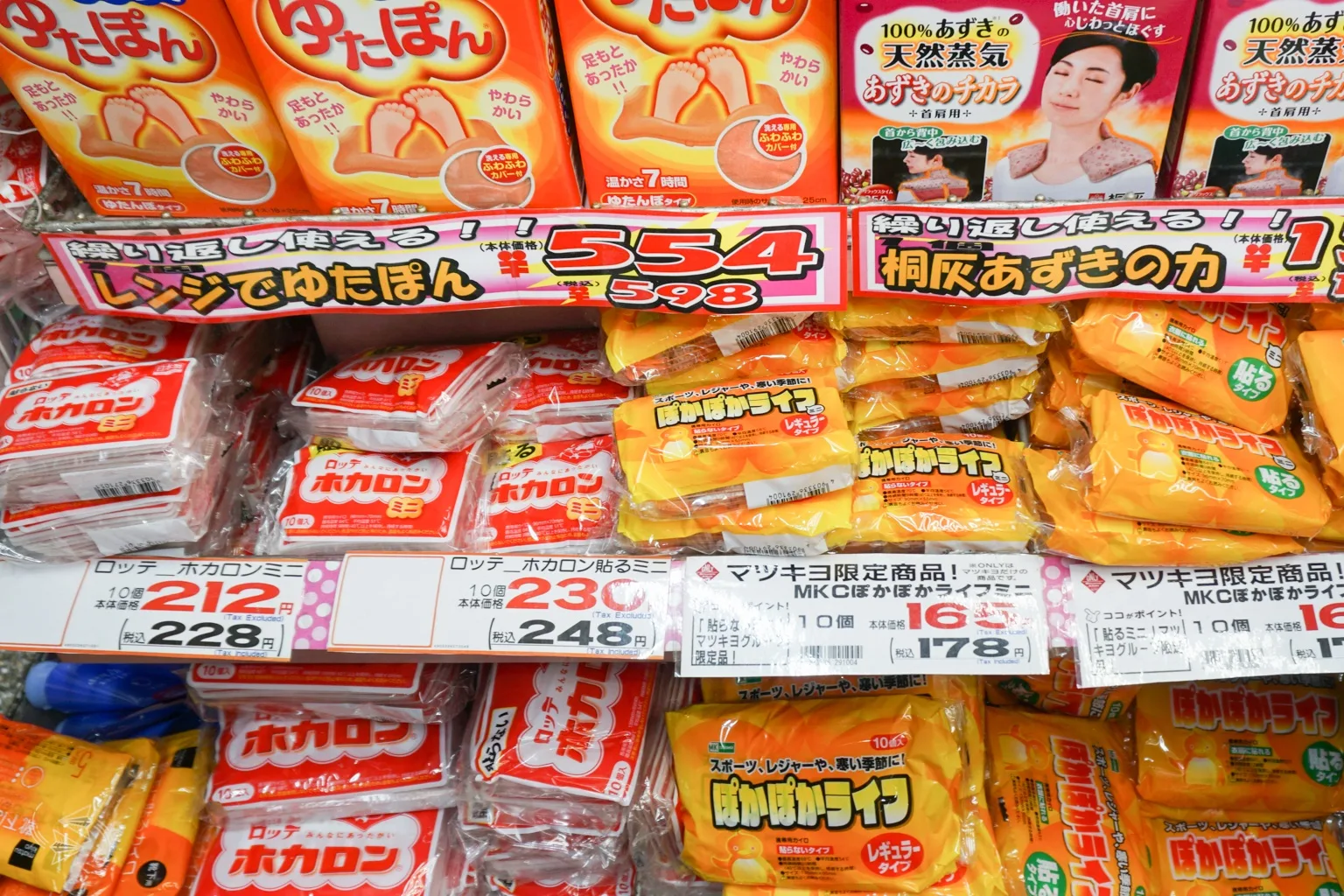
Nowadays there are many more eco-friendly varieties that can be reactivated and reused again and again, often by way of placing them in boiling water.
As you’re likely to have access to a kettle at your accommodation, we recommend taking this option, and then, as an added bonus, you can take them home with you and use them whenever it’s chilly.
2. Get a yutanpo
Yutanpo is the Japanese word for hot water bottle, and is a simple way to battle those cold nights.
While they are still in use in Japan, many younger people nowadays opt for modern conveniences like electric blankets, so they can sometimes be tricky to find.
My informal research suggests that around 1 in 5 pharmacies stock them. So they can be found, you just might have to stop into several to find one.
Other places that are good for finding this kind of thing are Loft and Tokyu Hands.
In Japan, the most popular type of hot water bottle is a hard, round and ridged plastic or aluminum case, like the one pictured below.
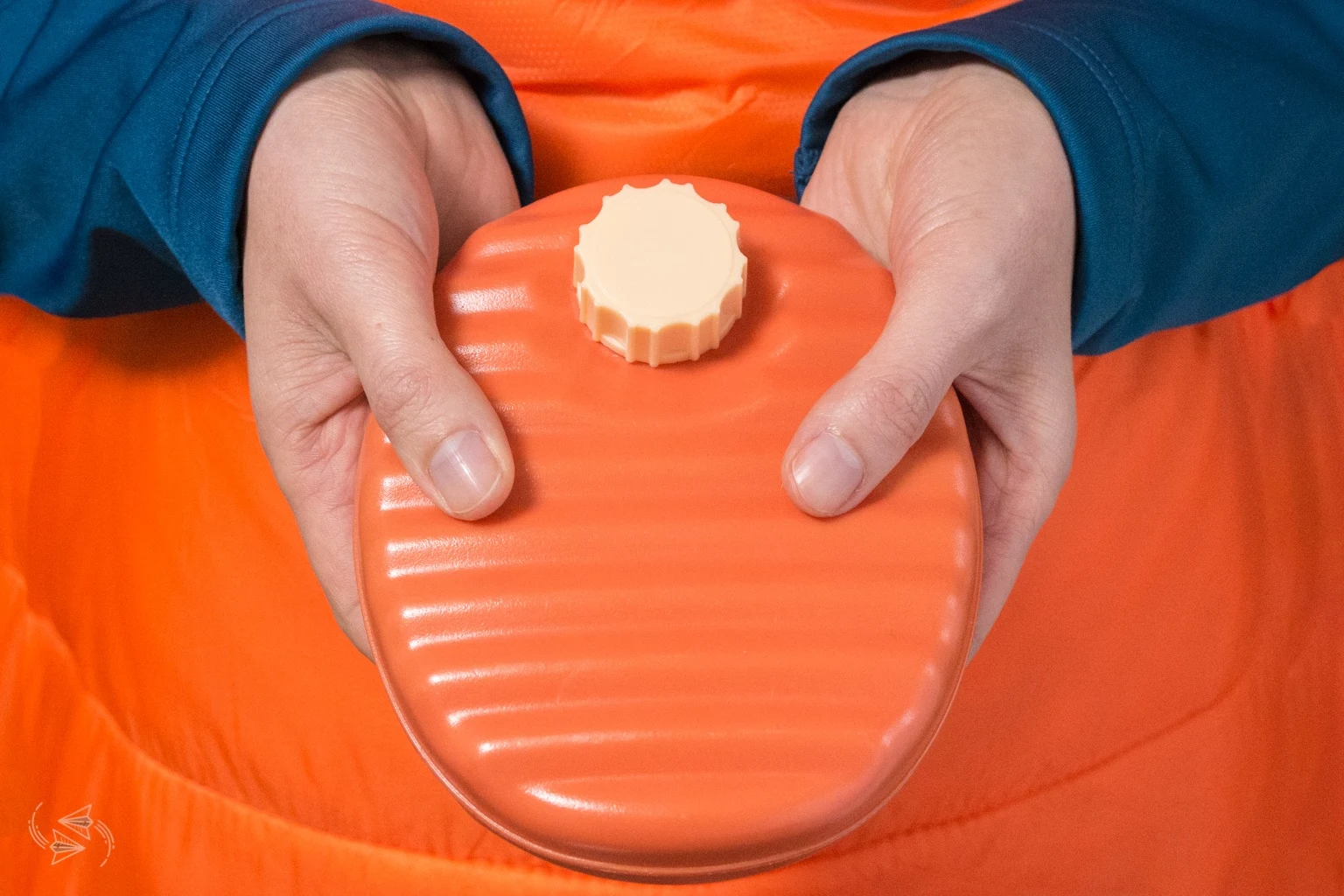
In lieu of a yutanpo, an easy hack is to fill a water bottle with hot water and use it in the same way. Just make sure you take extra care and secure that cap tightly.
3. Hop on a train
When everywhere else is freezing, you can usually count on the train to warm you up. Even the seats are heated, which is a nice touch, and definitely my favorite part of taking the train in the winter.
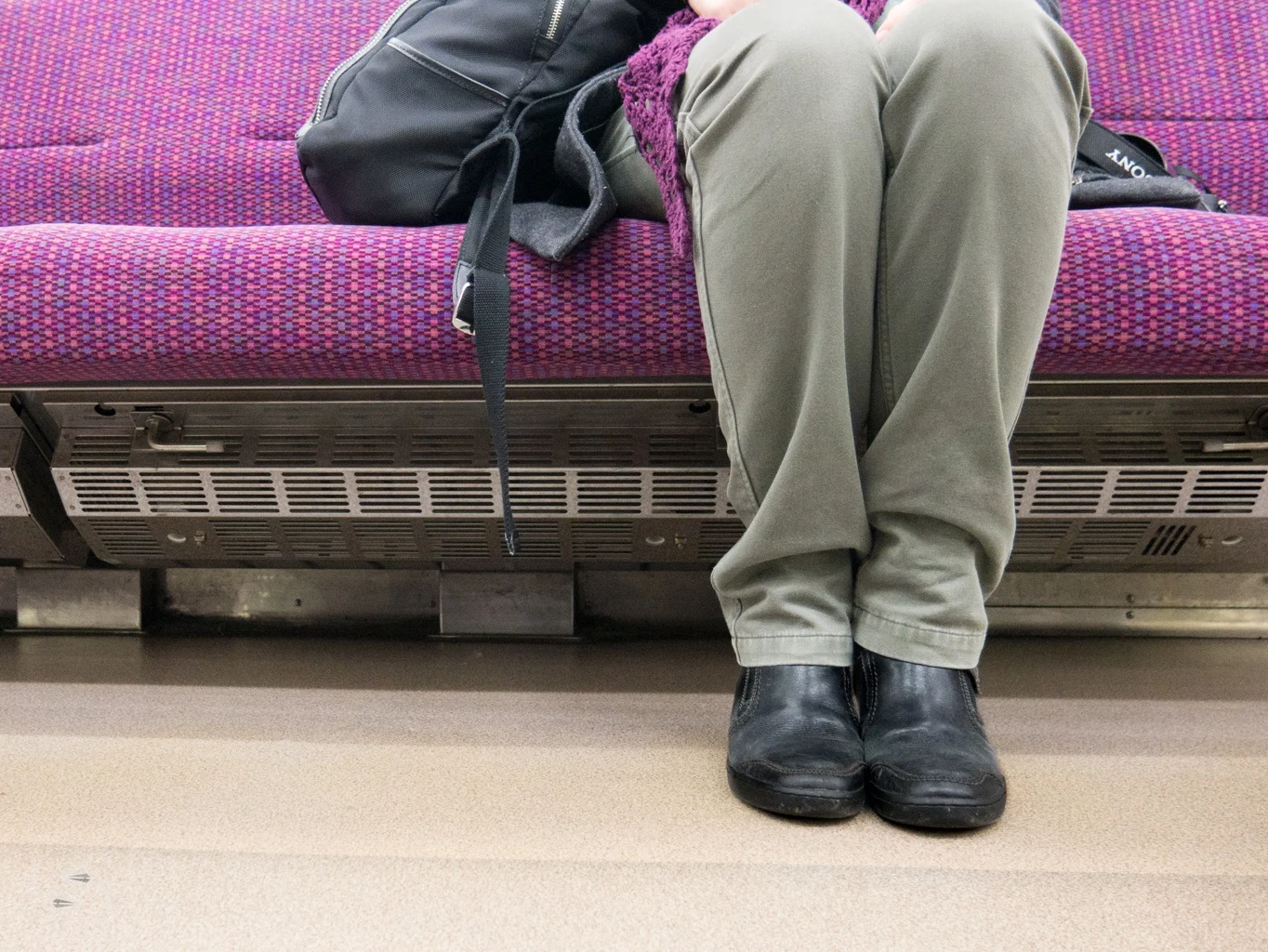
While corner seats are usually the most popular, if the train isn’t busy and you have your pick of seats, I recommend those in the center as then you don’t have to deal with the brunt of that inevitable cool blast of air every time the doors open.
4. Try a kotatsu
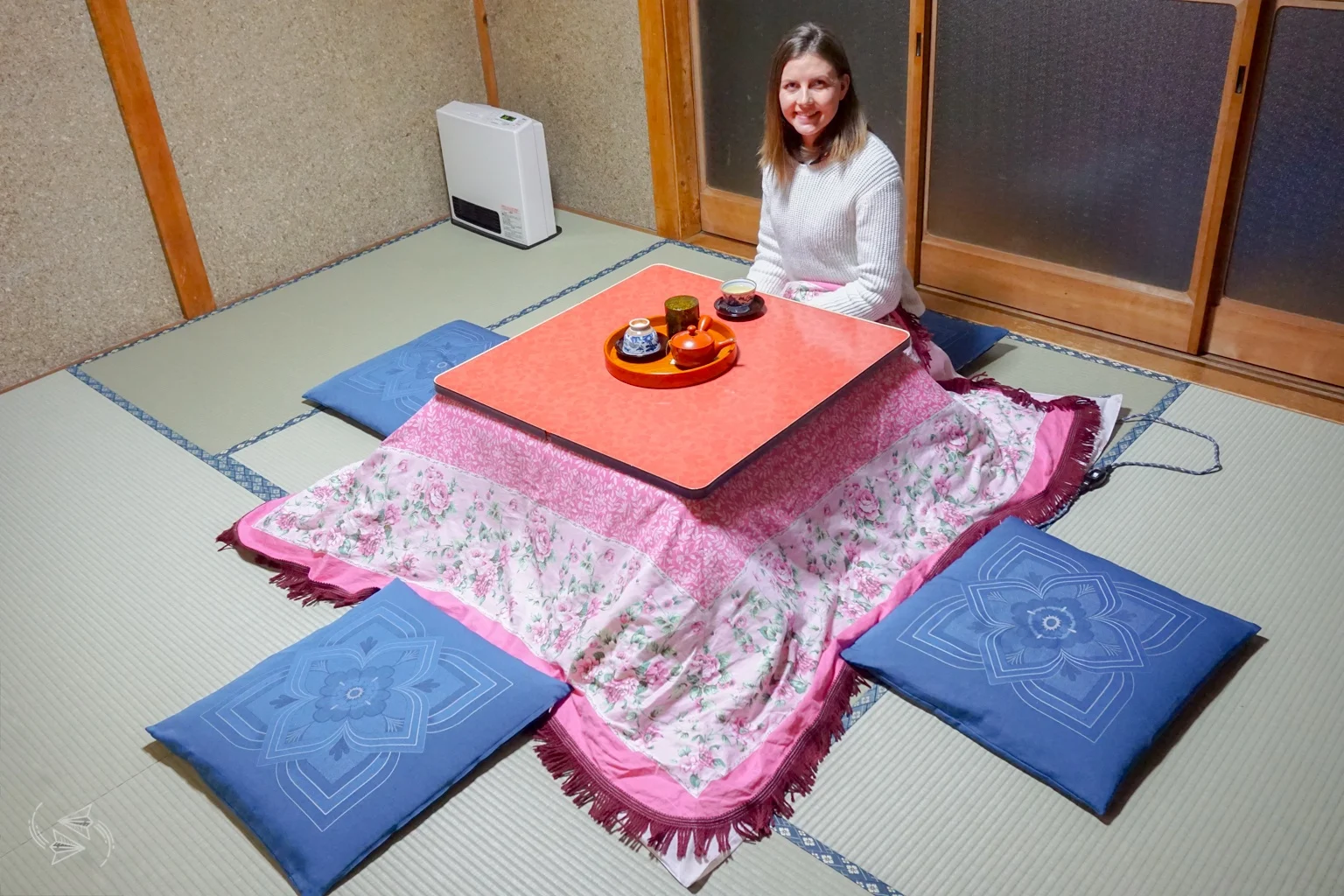
Kotatsu are probably one of the most ingenious Japanese inventions of all time.
Essentially it’s a low table with a heater underneath, over which you drape a blanket and then place a second table top.
You can then tuck the lower half of your body under the blanket, which traps the heat inside while also making a cosy little sanctuary from which to read a book or watch TV.
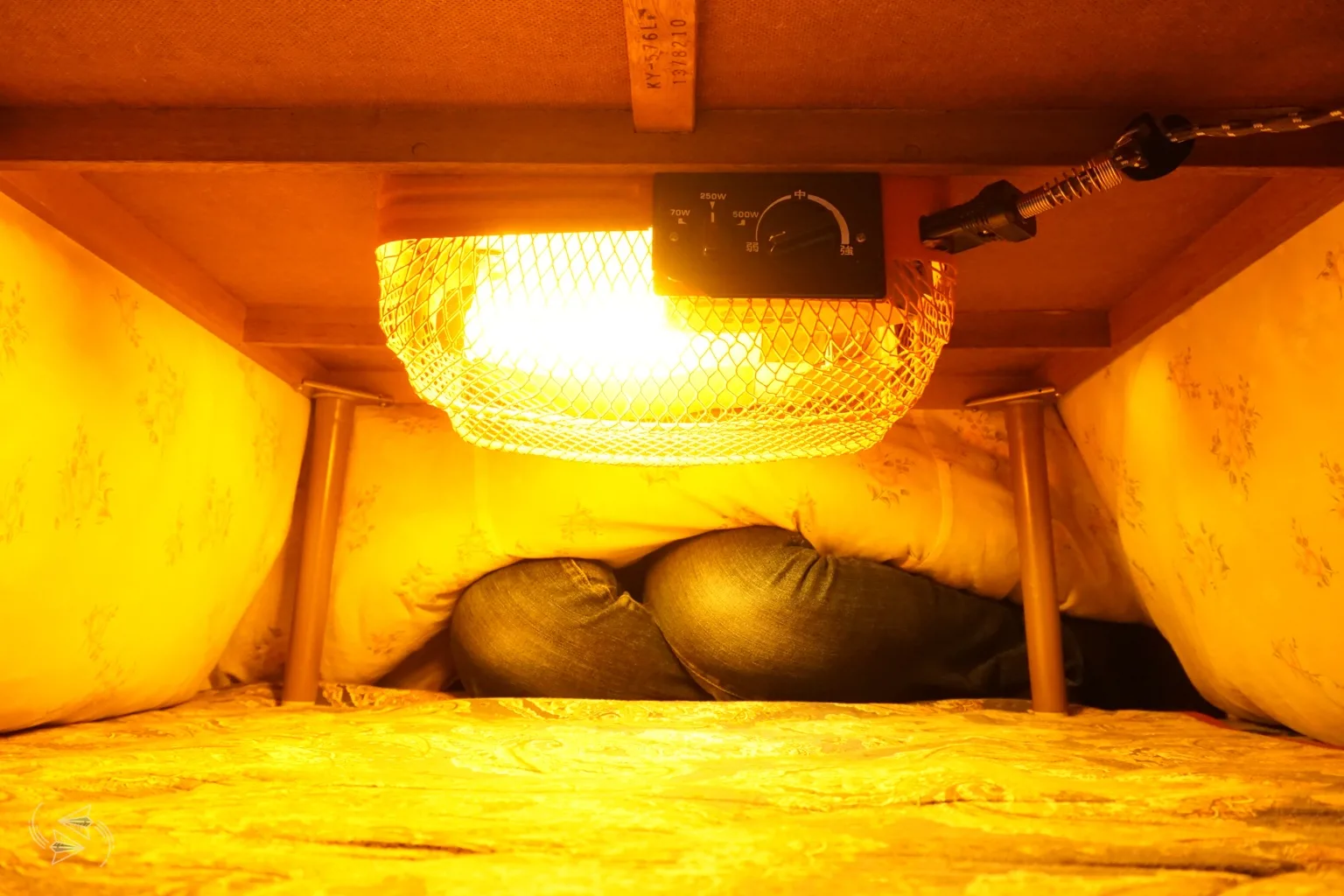
If you’re lucky, you may get to try one of these if you’re staying at a traditional Japanese inn or within a family home.
You can even find kotatsu cafes and restaurants too.
5. Get some hot drinks/C1000
There’s one vending machine in Japan for every 23 people, so you usually don’t have to look far to find one.
Japanese vending machines sell a combination of hot and cold drinks, so you can pick up a hot drink just about anywhere.
Even if you don’t understand Japanese, it’s actually a very simple system once you understand it.
Basically all the cold drinks are denoted by the color blue, while the ones marked in red are hot. So just look among the red selections for an instant warm boost.
Hot vending machine drinks also work brilliantly to warm your hands and to use as short-term pocket warmers.
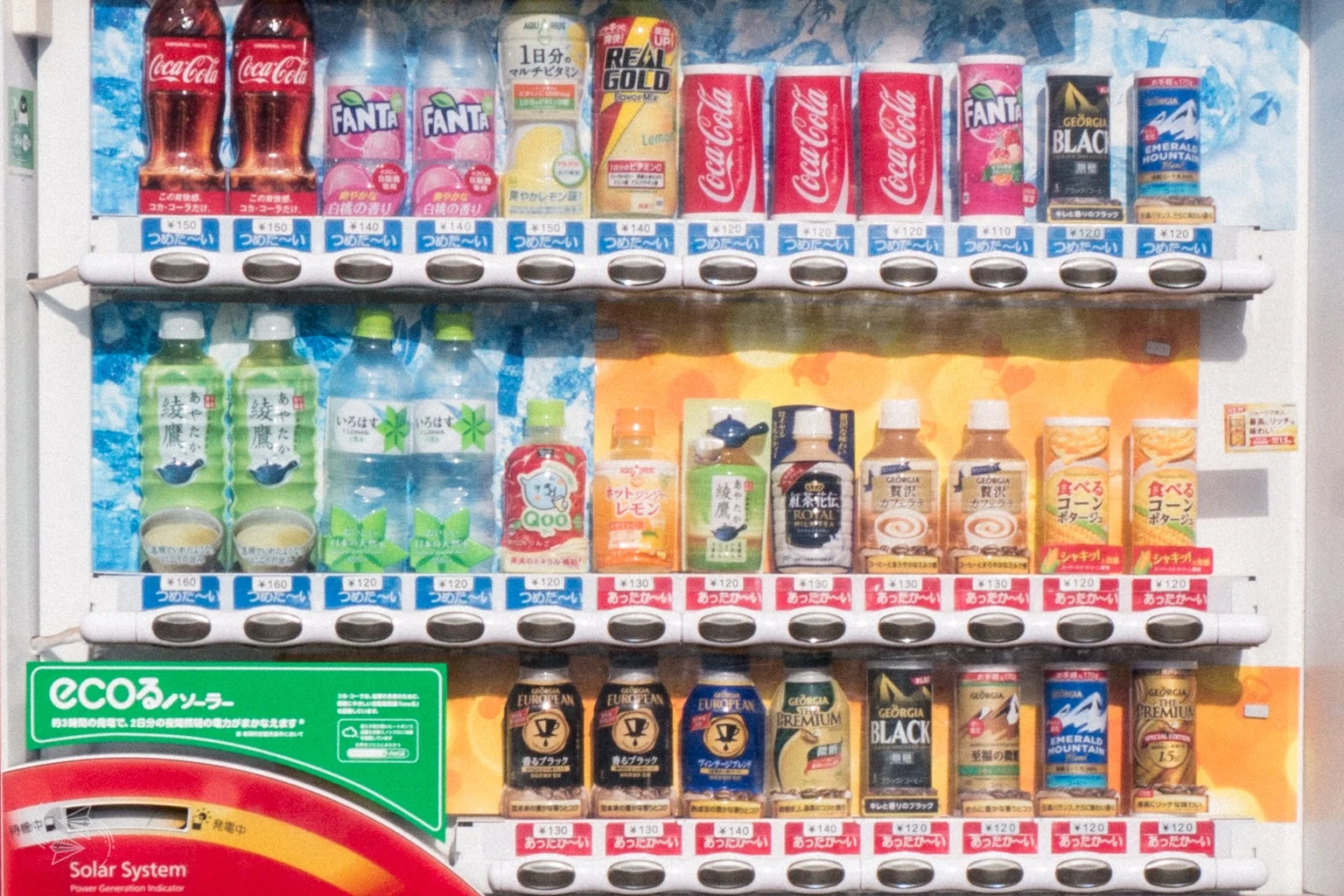
In the chilly months and when it feels like literally every one around you is sick, I highly recommend a drink called C1000.
It’s a citrus-y drink, designed to be drunk hot, that is supposed to have 1000mg of Vitamin C in each serving.
I start drinking this whenever I feel any of the first tell-tale signs of a cold coming on, or I’ve been around anyone who is sick (which is a lot of the time on crowded trains), and I feel convinced it has staved off more than a few hideous colds.
You can buy this drink or equivalent ones at vending machines and convenience stores, but as these ones usually only come in plastic bottles, I prefer to get the more eco-friendly option of sachets from the supermarket and drink them at home or pop them in a reusable bottle.
6. Eat nabe hot pot
A simple, nutritious and warming dish to eat during the winter time is nabe.
It’s essentially a Japanese style hot pot with meat, vegetables, oden and tofu in broth, and is easily customizable based on your dietary requirements.
It’s served in the nabe pot it was cooked in, with the little gas stove under it still burning so as to keep it warm as you eat. Try it at a restaurant or, if you have access to a kitchen, it’s a great option for self-catering.
As it’s a popular winter dish, in the cooler months you can often find a little section at the supermarket, where they have nabe ingredients conveniently packaged together.
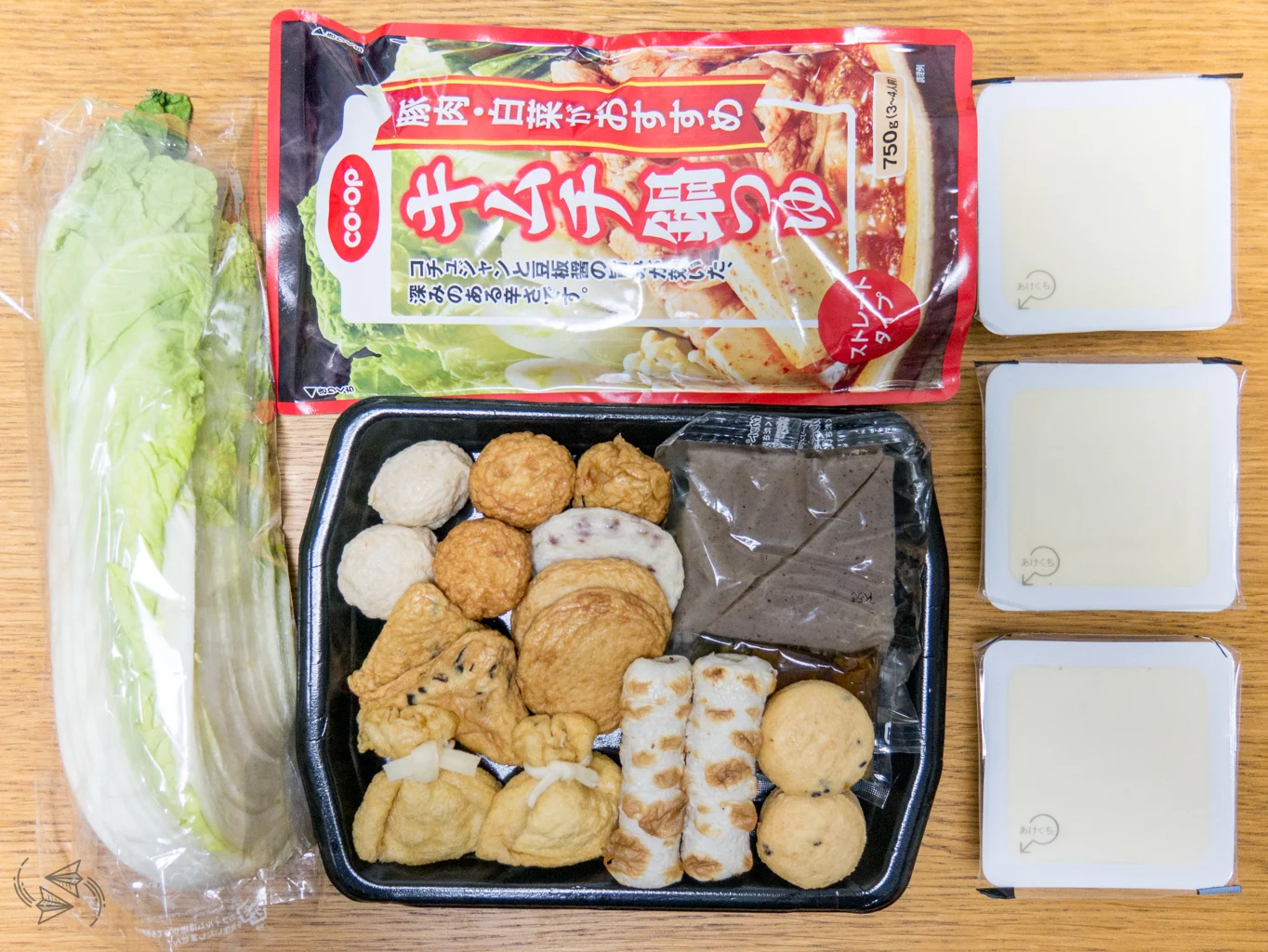
Simply grab the broth flavor of your liking (vegetarians and vegans should check ingredients as dashi is often made from a fish base), a package of nabe ingredients (essentially oden – note that a number of these items also contain fish-derived products), meat (if you want it), some tofu and any veggies you like (Chinese cabbage is a typical ingredient).
Basically it only takes as long as is needed for the ingredients to heat up, so it’s a really quick and easy meal.
Even if you don’t have access to a nabe pot and portable stove, you can still make this in a regular pot over a standard gas or electric stove.
7. Grab some heattech clothing
If you’re looking to add some versatile, cold-weather pieces to your travel wardrobe, we recommend trying heattech products.
Heattech is patented technology from the Japanese clothing company Uniqlo, that keeps you extra warm and toasty. You can get all kinds of heattech inner layers, along with gloves, scarves and fleece neck warmers.
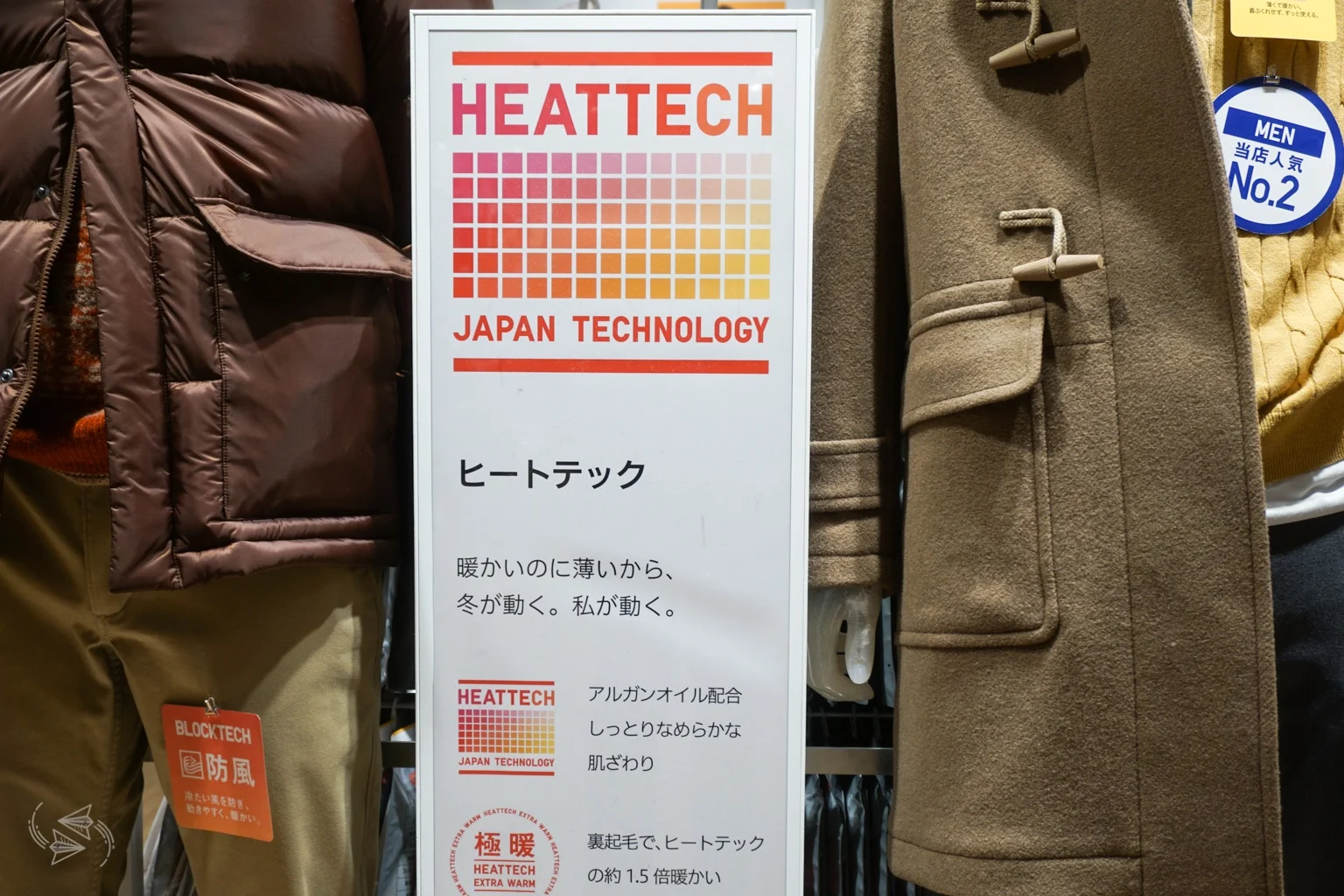
Uniqlo has expanded rapidly to other countries so you might be able to pick some up before your trip. Otherwise, it’s not hard to find once in country, especially in big cities.
8. Take advantage of Japan’s slipper culture
When you enter someone’s home as well as Japanese-style accommodations, among other places, you will need to remove your shoes.
And remember what I said about those freezing floors earlier? Good thing is, you’ll likely be offered slippers to wear. Use them!
Important cultural notes: No slippers on tatami mats, and there are usually separate slippers for use in the toilet. Make sure to take off your regular slippers and change to the slippers for bathroom use.
Just don’t forget to change back to your regular slippers afterwards. On more than a few occasions, I’ve made it at least a few steps from the bathroom before realizing!
Bonus: Washlet-style toilet seats are often heated in Japan too!
9. Go to a sento/onsen
Take advantage of Japan’s bathing culture and head to a sento (public bath house) or onsen (hot springs).
This is the perfect place to warm up as well as to experience an important part of Japanese culture.
This type of bathing warms you from the inside out, so you’ll feel the effects for quite some time after. There’s nothing quite like exiting an onsen in a magical glow, feeling oblivious to the outside temperature.
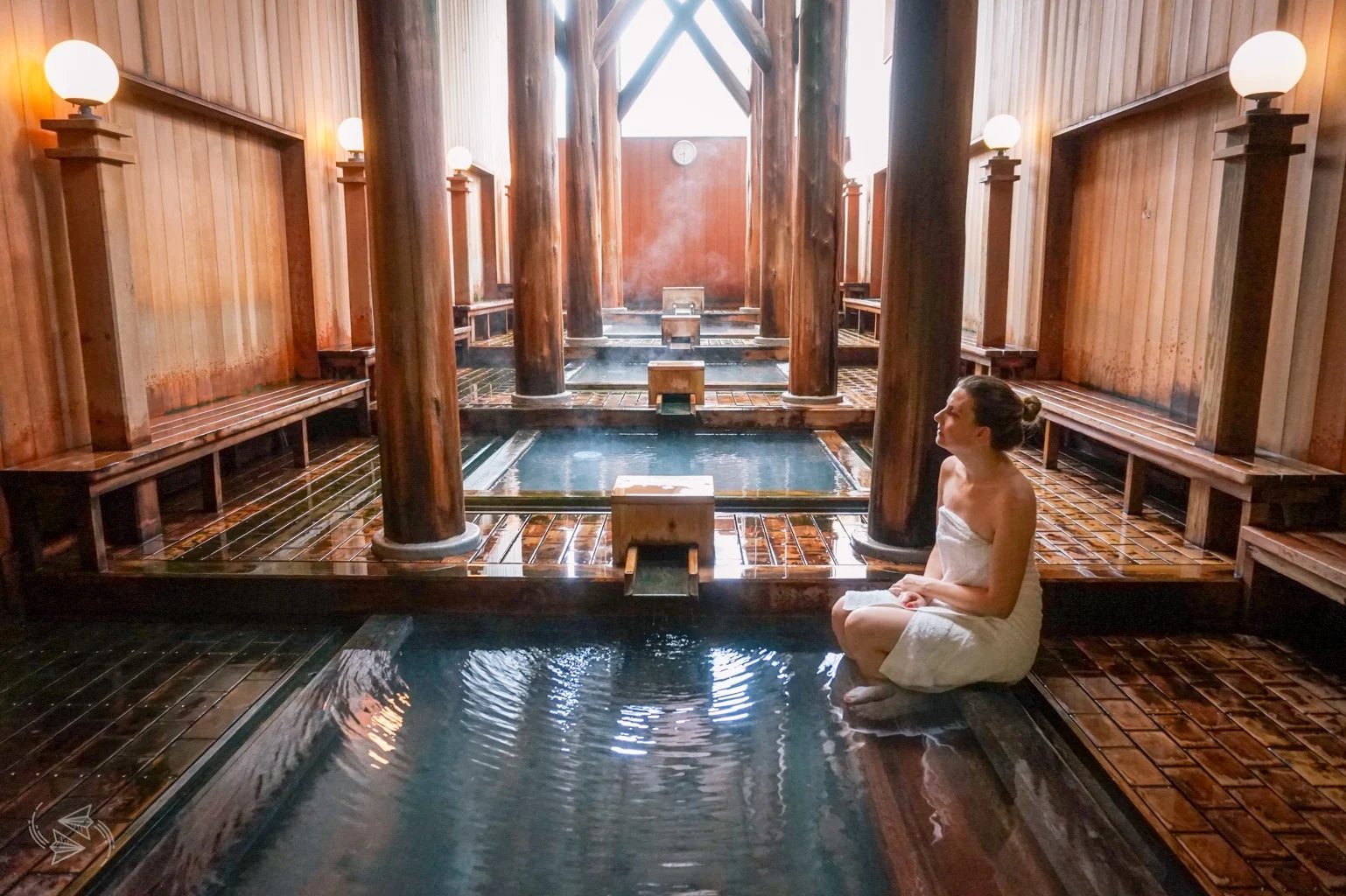
If you have access to a bath (a regular one) at your accommodation, which is likely unless you are staying at a hostel, you can enjoy a soak there after a day of sightseeing too.
Step-by-step instructions on how to use a Japanese onsen the right way.
10. Layer up
Layer, layer, layer, then repeat. Layering is a simple and proven method to retain heat, and is often not too difficult to accomplish with your existing wardrobe, especially as you can’t see most of them anyway.
Pile on a few inner layers, and complete your outer layer with a neckwarmer or scarf, earmuffs or a woolen beanie, and gloves.
It also pays to take a moment to limit any places where the drafty air can get in. That means, tucking in your tops, putting your socks over your leggings, and gloves over your sleeves. It really does make a difference. Especially when you’re doing long days of sightseeing in the elements.
If you don’t have these items with you already, the aforementioned Uniqlo is a great place to pick up good quality items at a reasonable price. You can often find things like scarves, woolen hats and gloves at 100 yen stores too, which is useful, especially when in a bind.
11. Wear a mask
Not only does wearing a mask help prevent illness, but it also keeps your face and nose warmer against the elements and that super dry air, especially if you’ve been using the heater at your accommodation.
Just remember to change your mask regularly to maintain its cleanliness and effectiveness.
Masks are a prevalent part of Japanese culture and can be found at any convenience store or pharmacy. If you are indeed unwell, it is considered polite to wear one.

David
Monday 11th of June 2018
What is the science behind Kairo? Great tips, love them.
Stefanie What
Tuesday 16th of January 2018
When I first came to Japan, an expat leaving the country gave me his kotatsu for free. Seven years later and I use it religiously every winter. I'm using it right now, in fact. It's not that my room is all that cold, but it adds that extra layer of coziness!
I would also suggest popping into department stores or AEON Malls- they have loads to do in them, so you can while away a few hours out of the house without having to deal with the cold weather!
Jessica Korteman
Friday 19th of January 2018
That's awesome you have your own kotatsu! I'm currently living in a sleeping bag suit - it's seriously a sleeping bag that can be zipped to have legs and then there are slits for your arms to pop out of. Hai bought it for me and it's amazing! Haha
You're right - department stores and malls are a good place to pop into when you want a break from the cold! It's convenient that Japanese department stores generally have restaurant levels so you can go in, check out what's on offer and have a meal at the same time.
Les Petits Pas de Juls
Friday 12th of January 2018
I bet these useful tips can apply anywhere else where we feel cold! except we won't be able to find some of the truly Japanese items. the funny thing is, you just make people want to visit Japan in winter now! ;-)
Jessica Korteman
Friday 19th of January 2018
Whoops! ;)